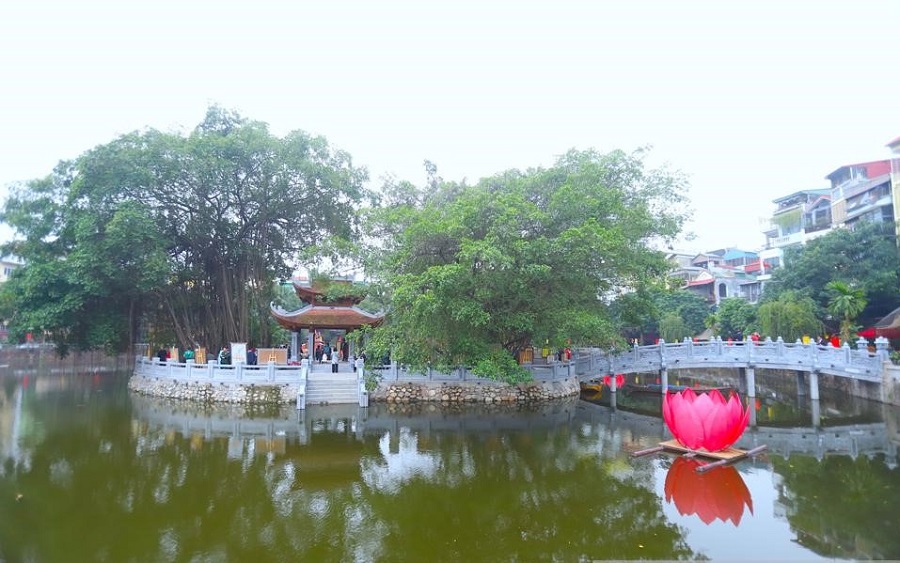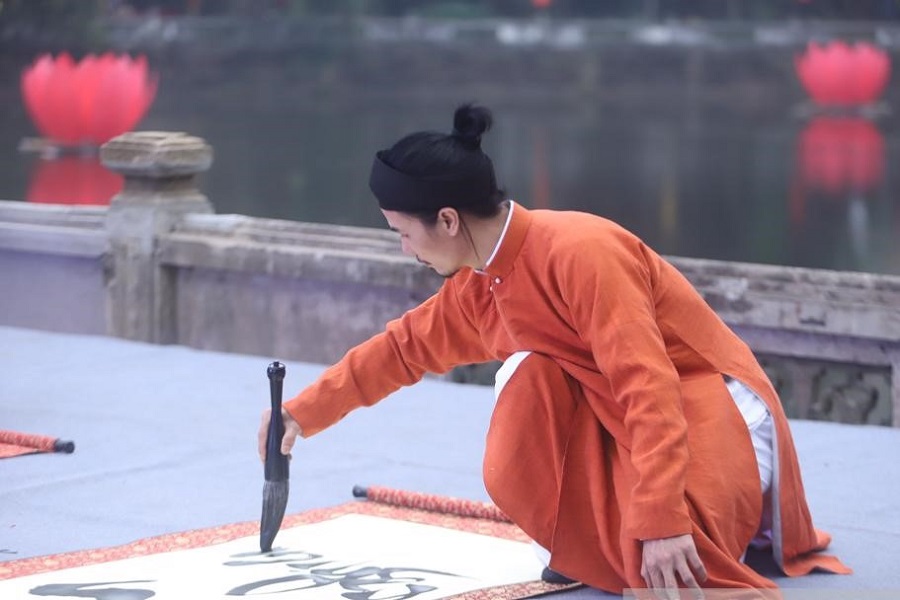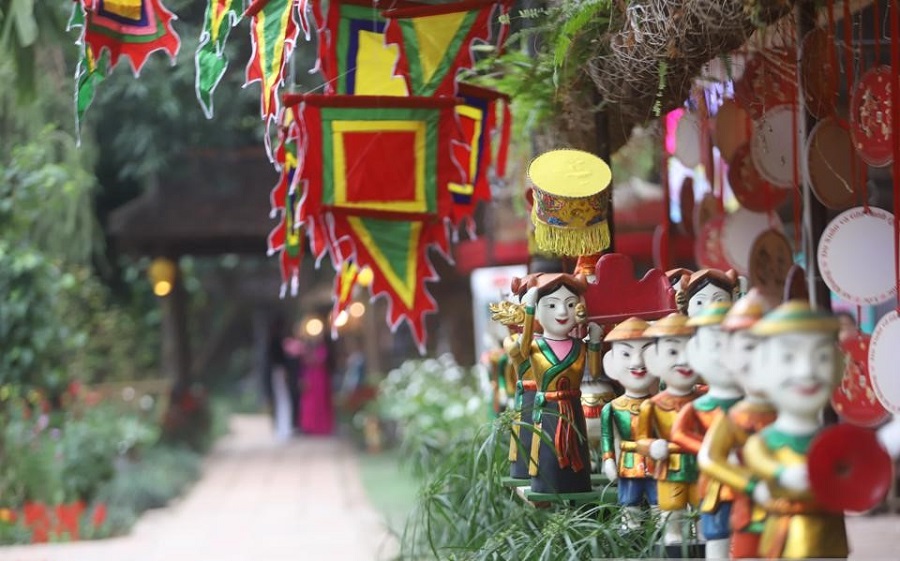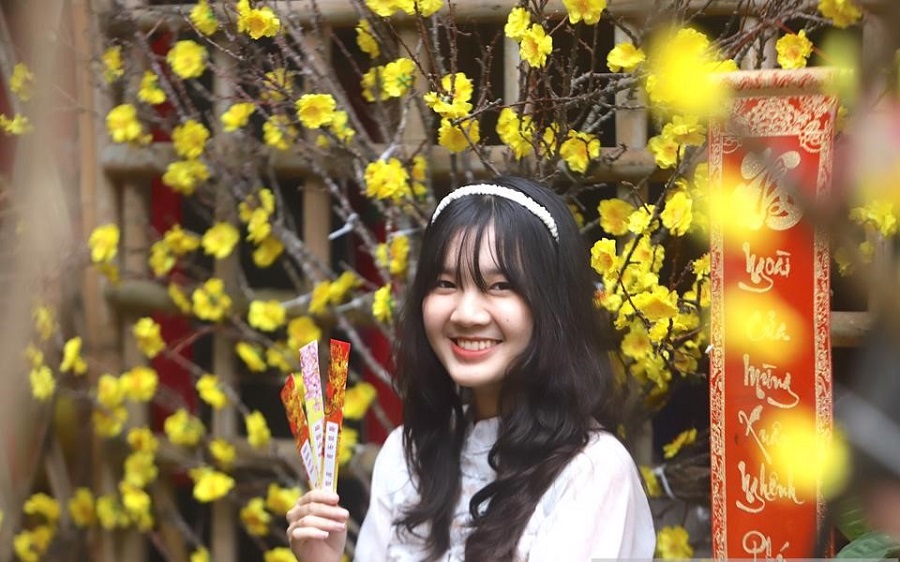Centuries-long lake in Hanoi gets facelift
With the facelift and the special value it boasts, Ho Van, a big lake belonging to the system of the Temple of Literature, is expected to become an appealing cultural-creative space of Hanoi in the years ahead.
Ho Van or Ho Giam (Lake of Literature), also known as Minh Duong Lake, has recently undergone an important facelift that would be an attractive heritage site in the thousand-year capital city of Hanoi.
| Kim Chau Islet is the highlight of the new restoration of Ho Van. Photo: Minh An |
Located in front of the main gate of Hanoi’s famous Temple of Literature and across Quoc Tu Giam Street, the lake is an integral part of the national relic Van Mieu - Quoc Tu Giam or Temple of Literature, so the preservation and promotion of its value will contribute to the protection of the relic. The renovation of Ho Van took several years to complete.
A fresh look
Located in the premise of the special national relic complex of the Temple of Literature and Imperial Academy, Ho Van used to be the place where Confucians held literary debates. Over a long period, the area fell into oblivion, and while taking advantage of poor management, an illegal shrine was erected.
After it was handed over to the Van Mieu - Quoc Tu Giam Center for Cultural and Scientific Activities in 2006, the lake got tidier and became the venue for cultural and artistic activities.
Prior to the project to refurbish Ho Van, the illegal constructions on Kim Chau Islet had severely affected the overall landscape and inherent values of the relic site.
With the approval from the authority, walkways across the area have been refurbished while decorative structures placed as part of the renovation project.
Also, Phuong Dinh Hall, the only relic on the islet, underwent restoration. It lies in the center of the Temple of Literature relic complex and exemplifies Vietnamese architecture.
The hall has two stacked roofs with eight slopes in total, and its base is 0.45 meters above the ground. The roofs are supported by 16 wooden posts - except the outermost ones, which are made of stone to better withstand weather conditions. The floors have been paved with Bat Trang tiled, new steps and pillar footings made of Thanh Hoa bluestone added and the roofs were clad with fish scale tiles. The two ancient Ficus trees and two stone steles are kept intact.
| Calligraphy festival was organized in the area of Ho Van last January in the Lunar New Year 2023. Photo: Minh An |
One notable change is the presence of a bridge in the northwest of the lake, leading to the islet. The structure, also of bluestone, is two meters in width and 17 meters in length, divided into five main spans by four rows of pillars. The bridge is decorated with traditional patterns, while the handrails are 0.95 meters in height and coated with rough opaque bluestone.
Similarly, the garden around the Ho Van area has transformed. The whole ground has been paved with anti-slip bluestone tiles, interlaced with five centimeters-wide grass strips to better match the surrounding natural landscape. In addition, the lake shore was embanked and stone railings were installed.
“The renovation of the Ho Van is aimed at restoring its original function and role, making practical contributions to promoting the overall value of the Temple of Literature relic complex,” said Le Xuan Kieu, Director of the Center for Cultural and Scientific Activities.
According to Assoc. Prof. Dr. Nguyen Van Huy, Deputy Director of the Center for Research and Promotion of Cultural Heritage of Vietnam, when the cultural space of Ho Van is formed, the first beneficiaries are the residents of the neighborhood, who enjoy not only public space for cultural activities but tourist opportunities as well.
The Ho Van area is now tidier and more charming as a destination for locals and tourists. Visitors to the Temple of Literature not only learn about the history of the Pavilion of the Constellation of Literature, and the 82 steles of the valedictorians, among other relics but also experience the cultural activities taking place in the Ho Van area.
A need for exciting programs
| Ho Van is expected to become an appealing cultural-creative space in Hanoi in the years ahead. Photo: Minh An |
At a recent meeting and poetic debate at Van Lake, Bang Viet - author of the well-known poem ‘Bep Lua’ or Burning Stove - expressed his satisfaction with Kim Chau Islet and Van Lake having been refurbished, meeting the expectation of many Hanoians.
“This is a beautiful and meaningful place. Kim Chau Islet isn’t far from the city’s hustle and bustle, yet it is completely quiet. It might not be perceivable from the street, but inside, it is strikingly gorgeous,” poet Bang Viet said.
However, there are opinions that the renovation is only superficial and the revitalization of the premise would not be complete without cultural and educational activities related to the relic.
According to Assoc. Prof. Dr. Do Van Tru, Chairman of the Vietnam Cultural Heritage Association, the renovation is really important in restoring the lake’s value, but the Van Mieu - Quoc Tu Giam center still needs to pay attention to diversifying cultural activities for value promotion.
“In the past few years, book fairs, calligraphy festivals, and experiential activities taking place at Ho Van were appealing and appropriate - that’s a wonderful start. Still, these events haven’t been organized on a regular basis, so more and better ones are needed to promote the relic’s values,” he emphasized.
| Ho Van has become a tourist attraction in Hanoi. Photo: Minh An |
After six years, the project to restore Phuong Dinh Hall and Kim Chau Islet on Ho Van has been completed. The activities run here have revived the lake after a long period of slumber. The first goal of the project has been achieved.
“In the coming time, the center will carry out another overall renovation project for sustainable tourism development. After that, Ho Van will become a center of cultural activities aimed at young people as well as an open space for public events,” Kieu confirmed.
Located in Dong Da District, Hanoi, the Ho Van area covers 11,932 square meters, of which 7,778 square meters is the lake water surface and the rest is the Landscaped area.
In the 1940s, a road was built, crossing between the Temple of Literature complex and the lake.
The place was revamped in 2016 and cultural activities have been held here occasionally such as exhibitions, Spring Calligraphy Festival, and book festivals.















